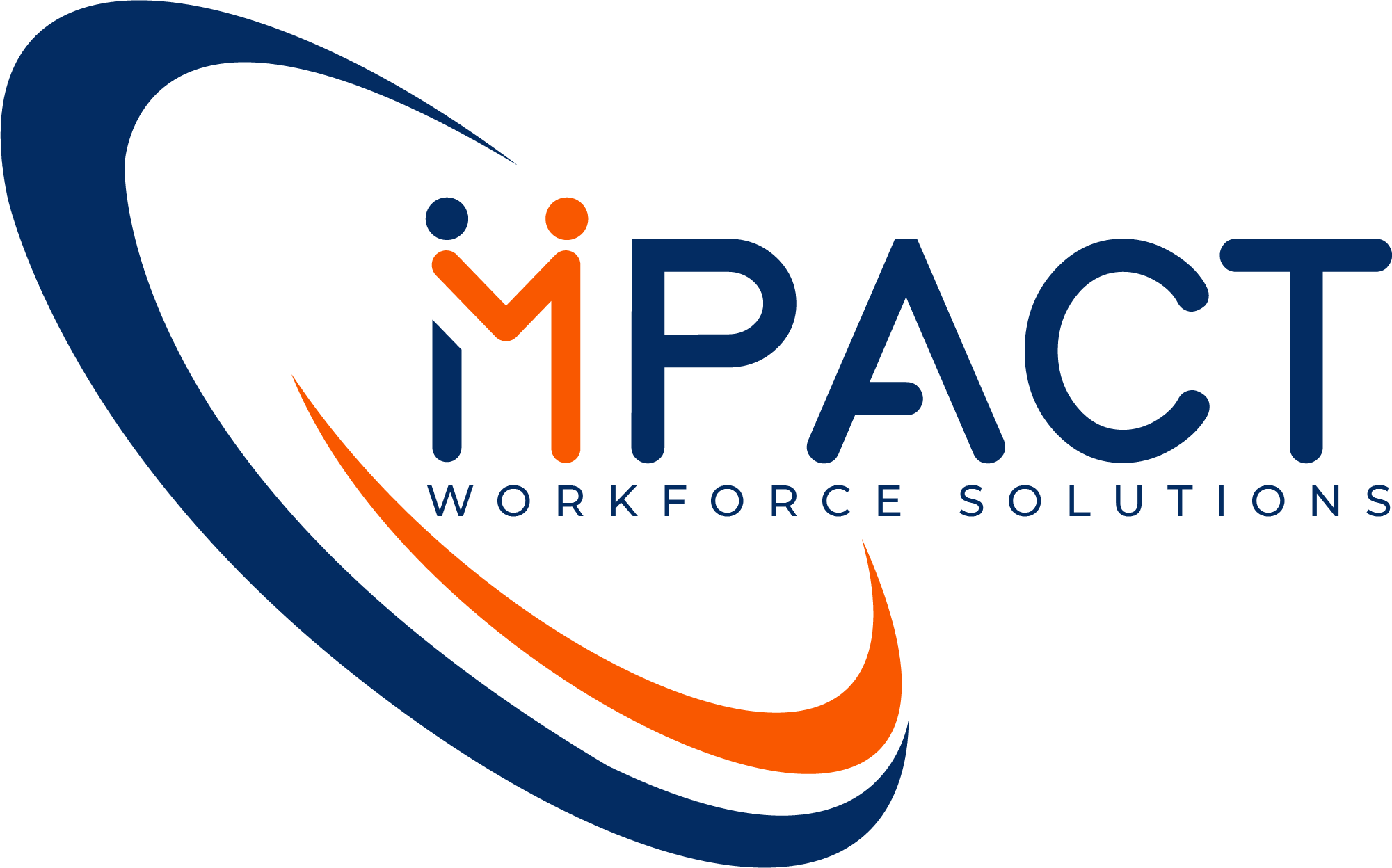
2024 put employee retention under the microscope, especially in industries where workforce stability is the difference between profit and chaos. In manufacturing, distribution, and contact centers, turnover is a direct hit to safety, efficiency, and cost control. Retention isn’t an ideal. It’s an engine.
As VP of Workforce Operations at Impact Workforce Solutions, I work with companies facing these challenges every day. My background in supply chain operations gives me a practical, systems-driven perspective on these challenges, and from that perspective, I’ve helped Impact and our clients turn churn (and its downstream costs) around with custom workforce solutions. Because if there’s one thing we can all be certain of for 2025, it’s that retention isn’t an ideal. It’s an engine.

Employee retention is business equity.
In fast-paced operations like manufacturing, distribution, and contact centers, where every shift impacts the bottom line, employee retention isn’t just an asset — it’s a competitive advantage. Lose sight of it, and your safety, quality, performance, and bottom line will suffer.
- Expertise: When experienced employees leave, they take critical institutional knowledge with them. In manufacturing, this means fewer workers who understand machine operations, troubleshooting, and process optimizations, often leading to higher defect rates and slower production cycles. In call centers, lost retention means replacing seasoned agents with rookies who lack product expertise, resulting in more escalations and lower customer satisfaction.
- Efficiency: Retaining employees means keeping operations smooth. New hires take longer to ramp up, require more supervision, and make more mistakes. The longer a worker stays, the more proficient they become, reducing cycle times, improving workflow, and decreasing bottlenecks.
- Flexibility: Companies that invest in employee retention build a workforce that can quickly adapt to new roles, seasonal spikes, and unexpected disruptions. Losing experienced workers means fewer employees who can handle multiple roles, adjust to automation changes, or step up when business demands shift.
- Scalability: A stable workforce makes scaling operations easier. If a business is constantly replacing workers, it spends more time training new hires than expanding operations. High turnover means a business can’t maintain a skilled, knowledgeable team ready to support long-term growth.
- Safety: In manufacturing and distribution, experienced workers are more adept at following safety protocols, reducing the risk of accidents. High turnover introduces less experienced personnel, potentially increasing workplace incidents and associated costs.
- Employer reputation: Companies with reputations for chronic understaffing, poor training, or constant hiring cycles struggle to attract high-quality workers. Needless to say, this can become an expensive and vicious cycle, compounding chaos and costs year over year.
- Productivity (profits): The financial impact of turnover is significant. Every lost worker means lost productivity, lost opportunities, maybe lost clients, and potentially lost market share. Employee retention keeps businesses competitive with consistently better output — in terms of both quality and quantity.
But employee retention is also elusive.
Employee retention in manufacturing, distribution, and contact centers is an ongoing challenge due to the nature of the work, wage competition, and workplace dynamics. Many of these jobs are repetitive, physically or mentally demanding, and lack clear pathways for advancement, leading employees to feel undervalued.
Burnout is common in distribution centers, where workers are held to individual and team performance standards for their shifts. It’s also common in contact centers, where agents endure back-to-back calls, irate customers, and rigid scripts. When employees see no connection between their work and career growth, turnover becomes inevitable, and employee retention starts to deteriorate.
Competitive pay alone is no longer a sufficient retention strategy — it’s just one piece of a larger retention strategy. Fast food and retail wages have increased, making contingent workers question whether physically demanding warehouse jobs or high-stress contact center roles are worth the effort.
Contingent workers also perceive a divide between themselves and full-time employees, which reinforces an “us and them” culture that pushes them to seek more stable opportunities elsewhere. Many companies still fail to provide contingent workers with benefits, job security, or pathways to permanent employment, leaving them disengaged.
Lack of communication and engagement further erodes retention. Many contingent workers operate with limited feedback, unclear performance expectations, and no insight into career growth opportunities. Without regular communication and structured engagement efforts, they feel disposable rather than valued. This is particularly problematic in high-churn environments like contact centers and distribution centers, where employees often don’t receive enough training, support, or recognition.

We improve employee retention.
At Impact, a deep focus on boosting retention is integrated into every aspect of our workforce solutions. It’s informed by data, calibrated to each client’s business operations, and focused on improving quality of life for both contingent and full-time employees. The outcome? Business stability and growth.
Impact’s employee retention solutions:
- Customized retention strategies: Every workforce is different, so we assess each client’s operations, culture, and challenges to build tailored employee retention programs. From streamlining onboarding to enhancing employee benefits, we design solutions that align with business goals.
- Core2 staff augmentation: Traditional temp-to-hire models don’t work long-term. Our Core2 program introduces a structured, three-step pathway — starting with temporary employment, transitioning to Core2 status with full benefits and career growth opportunities, and leading to full-time conversion. This creates stability, career milestones, and long-term workforce commitment.
- Clarity workforce analytics: Our proprietary Clarity platform provides real-time insights into workforce performance, engagement, and retention trends so businesses can make informed decisions and proactively address workforce challenges.
- Effective on-site management: Our operations managers play a critical role in employee retention by bridging the gap between senior management and frontline employees. They communicate organizational goals, foster engagement, and identify areas for improvement firsthand. By being physically present and actively involved, they help employees feel valued, supported, and connected to the organization.
- Employee engagement initiatives: Retention starts on day one. We set new hires up for success with clear onboarding, career development opportunities, and continuous feedback loops — using pulse surveys, floor engagement, and one-on-one check-ins to keep employees invested and engaged.
Impact’s employee retention success stories:
- How Impact Improved Employee Tenure and Enabled Expansion for a Technology Manufacturer
- How Impact Reduced Turnover and Boosted Productivity in a High-Demand Manufacturing Setting
- How Impact Improved Staffing, Retention, and Operational Excellence for a Legacy Distribution Center
- How Core2 Improved Retention and Reduced Costs for a Teleprospecting Call Center

Partner with Impact to increase your employee retention!
2024 reinforced an essential truth: Employee retention is more than just a human resources initiative; it’s a business strategy — and a winning one. It enhances safety, productivity, and long-term success for employees and employers alike.
At Impact Workforce Solutions, we’re committed to making workforce stability a reality for our clients. Through innovative programs like Core2, cutting-edge technology like Clarity, and a relentless focus on employee engagement, we’re shaping a future where employee retention is effectively prioritized as a key driver of success across industries.
